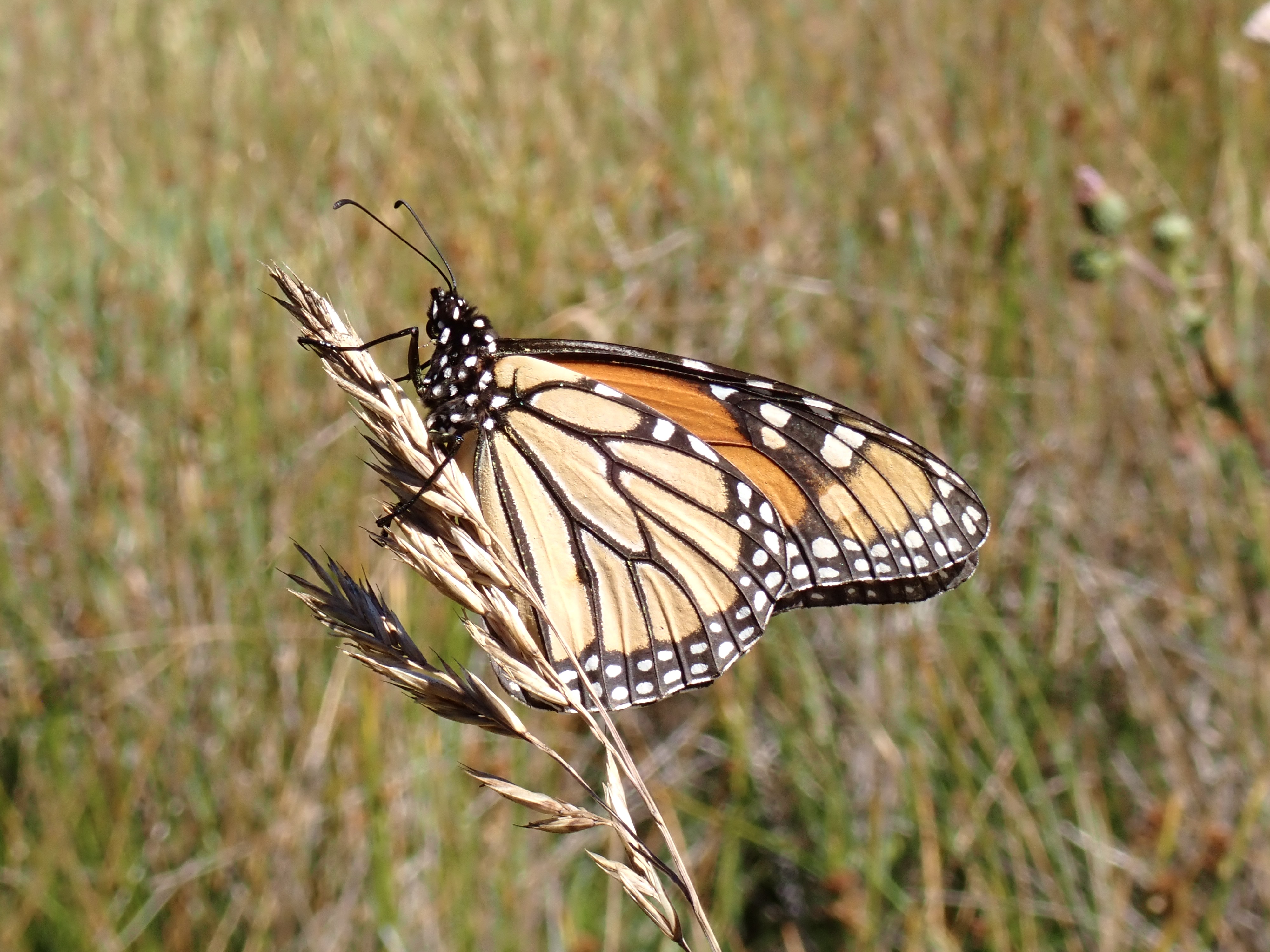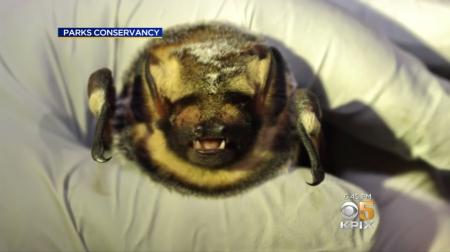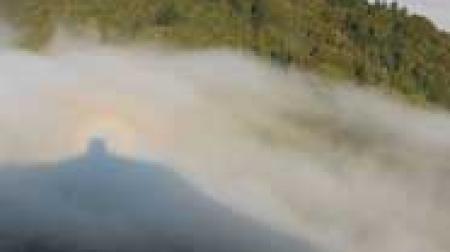What are the monarchs up to this fall?
By Nicole Parra, One Tam Community Science Intern and Nicolette Michel, One Tam Community Science Fellow

An adult monarch butterfly observed while monitoring wild milkweed in Marin. Photo: Nicole Parra/Parks Conservancy
The western monarch butterfly is known for its bright orange and black coloration and impressively long migration. Across Marin County, striped monarch caterpillars can be seen munching on narrow-leaf milkweed, their exclusive host plants. Unfortunately, this iconic species has experienced a dramatic decline of 99% since the 1980s. Potential contributors to the butterfly’s decline include breeding and overwintering habitat loss from deforestation and limited growth of milkweed due to drought.
Beginning in late spring, western monarch butterflies move southward from the northwestern U.S. and Canada in search of milkweed to oviposit (lay their eggs) on. Once they reach adulthood, the offspring live for about two months and continue moving south towards and through California, again seeking more milkweed habitat for their offspring. This continues through the summer for four to five generations. Right now, monarchs can be seen passing through the Bay Area – you might even see them feeding on nectar in your garden! Around October, the final generation of western monarchs must find a safe place to overwinter along the California coast until the following spring. In the spring, when the conditions are right, they set off northward back to where their ancestors came from, and the yearly cycle repeats.
Currently, the One Tam collaborative is assessing monarch breeding and overwintering habitats for future enhancement in the region to better support the species as it migrates from inland to coastal areas. You can help support our vital butterfly conservation research by posting any egg, caterpillar or butterfly pictures on iNaturalist, even from your backyard!
To learn more about the monarch butterfly and efforts to conserve them, see the following:
- Xerces Society: support overwintering research
- Western Monarch Milkweed Mapper: submit your monarch sightings
- Monarch Joint Venture: learn about nationwide conservation
To learn more about the One Tam project to help monarch butterflies that migrate through Marin, plus get local information for ways you can help here in Marin, see our project page.
 The photos above show monarch butterflies in three stages: an adult female, a caterpillar in its third instar (one of five stages of larval growth), and a pinhead-sized egg. These observations were made during One Tam's work to monitor milkweed and enhance breeding habitat at selected sites on public lands in Marin County. Photos: Nicole Parra/Parks Conservancy
The photos above show monarch butterflies in three stages: an adult female, a caterpillar in its third instar (one of five stages of larval growth), and a pinhead-sized egg. These observations were made during One Tam's work to monitor milkweed and enhance breeding habitat at selected sites on public lands in Marin County. Photos: Nicole Parra/Parks Conservancy

